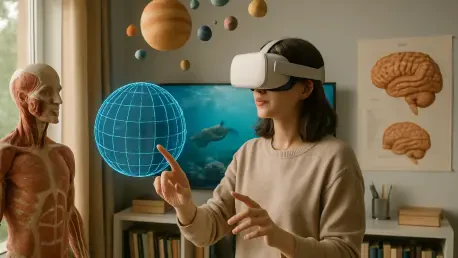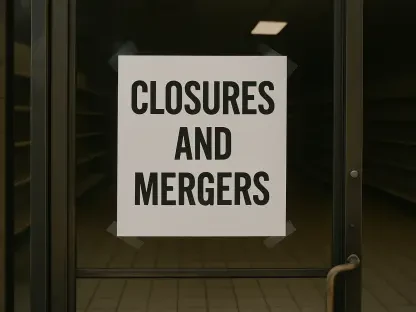Picture a scenario where education transcends the limitations of physical classrooms and geographical divides, allowing students to step into a virtual university campus, engage in complex medical simulations, or collaborate on engineering projects without ever leaving their homes. This isn’t a distant dream but the ambitious reality being crafted by Chulaverse, a pioneering virtual platform from Chulalongkorn University in Thailand. Emerging as a response to global challenges like pandemics and natural disasters, Chulaverse harnesses immersive technology to create a borderless learning environment that could reshape education as we know it today.
At its heart, Chulaverse represents a radical shift in educational delivery, leveraging virtual reality (VR) and web-based access to build an interactive space that mirrors real-world campuses while offering structured academic content. It addresses the critical demand for continuity in learning during crises, ensuring that knowledge remains accessible regardless of external circumstances. The platform’s innovative approach combines exploration with education, making it a potential game-changer for students and lifelong learners across the globe.
What makes this initiative stand out is its ability to adapt to diverse needs through a dual-module system, alongside a commitment to refining user experience based on real feedback. As the digital landscape of education continues to evolve, Chulaverse stands as a beacon of what’s possible when technology and academic vision align. The journey of this platform offers a compelling look into how immersive learning might bridge gaps that traditional methods cannot.
Exploring the Virtual Frontier
Unpacking the Platform’s Core Elements
Chulaverse operates through two distinct yet complementary modules that cater to different facets of the learning experience, ensuring a holistic approach to virtual education. Chulaverse World, often abbreviated as CV World, serves as the exploratory hub where users can navigate detailed 3D renderings of Chulalongkorn University’s campuses. Through personalized avatars, individuals can visit iconic locations like the Central Library or the Faculty of Engineering, attend virtual events such as lectures or exhibitions, and interact using tools like chat rooms and file storage. This module extends beyond students to the general public, broadening its appeal by simulating a university experience that feels tangible despite being entirely digital. The immersive nature of CV World fosters a sense of community and engagement that traditional online platforms often lack, making it a vital component for events like virtual open houses during times of disruption.
In contrast, Chulaverse Learn, or CV Learn, focuses on structured academic delivery, offering a virtual classroom environment packed with immersive content. This includes 180- and 360-degree videos, simulations, and VR tours accessible via 3D glasses or standard web browsers. Seamlessly integrated with existing university systems for course registration and certification, CV Learn supports lifelong learning by providing practical training opportunities, particularly in specialized fields. For instance, medical students can practice critical procedures in a risk-free setting before applying skills in real life. This module underscores the platform’s commitment to enhancing educational outcomes through technology, ensuring that learning is not only accessible but also deeply engaging and relevant to real-world applications.
Bridging Accessibility and Engagement
Accessibility lies at the core of Chulaverse’s design, with dual access methods ensuring that users with varying technological resources can participate. For those equipped with VR headsets, the platform offers a fully immersive experience ideal for detailed simulations and interactive scenarios that mimic physical presence. Meanwhile, web-based access through the official portal allows anyone with an internet connection to engage with the platform, breaking down barriers for users who lack specialized equipment. This inclusive model reflects a deliberate effort to democratize education, ensuring that geographical or financial constraints do not hinder participation in this virtual learning space.
Beyond access, the platform enhances engagement in ways traditional online tools often struggle to achieve. Unlike standard video conferencing where participation can be passive, the avatar-based interactions in CV World enable instructors to gauge student involvement more effectively. A practical example is seen in courses like Exploring Robotics at the Faculty of Engineering, where students adapt to virtual navigation with the help of quick-start guides, leading to smoother and more active collaboration. By blending cutting-edge technology with user-centric design, Chulaverse creates an environment where learning feels dynamic and personal, setting a new benchmark for how educational platforms can foster connection and interaction across distances.
Building the Vision Through Collaboration
The Power of Interdisciplinary Teamwork
The creation of Chulaverse stands as a testament to the strength of collaborative innovation, bringing together a diverse team from Chulalongkorn University to address the complexities of virtual education. Spearheaded by experts from the Faculty of Engineering and bolstered by contributions from fields like medicine, science, law, and business administration, a dedicated 19-member team formed the Immersive Technology Lab to drive this project forward. Over the span of roughly one and a half years, the group navigated significant challenges in aligning their varied expertise to craft a cohesive platform. This interdisciplinary approach ensured that every aspect, from technical design to educational content, was informed by a broad spectrum of perspectives, resulting in a tool that serves multiple academic and practical needs effectively.
This collaborative spirit extended beyond internal efforts, as the development process also highlighted the importance of overcoming logistical hurdles within a multidisciplinary framework. Each department contributed uniquely—computer engineers refined login systems, medical professionals shaped simulation content, and management experts streamlined operational integration. The result was a platform that not only functions as a technological marvel but also resonates with the real demands of educators and learners. Such teamwork exemplifies how complex challenges in educational technology can be met through shared vision and expertise, positioning Chulaverse as a model of what’s achievable when diverse minds unite for a common goal.
Technological Foundations and Global Partnerships
Underpinning Chulaverse is a robust technical framework that leverages advanced tools to create an accessible and immersive experience for all users. The platform’s 3D environments were crafted using Blender, a powerful modeling software, while Unity enabled the development of interactive spaces and avatars, ensuring compatibility with both VR headsets and web browsers. This technical versatility caters to a wide audience, allowing seamless transitions between fully immersive setups and more accessible online interfaces. The choice of such tools reflects a strategic focus on scalability, ensuring that the platform can adapt to varying user capabilities without compromising on quality or engagement.
Further enhancing its capabilities, Chulaverse benefited from strategic partnerships with international entities that enriched its visual and functional depth. Collaborations with companies like NEXTClan for avatar design and Fatos, a mapping specialist, for precise 3D campus representations, elevated the platform’s aesthetic and practical appeal. These alliances not only improved the user experience but also underscored the global potential of Chulaverse, demonstrating how external expertise can amplify local innovation. By integrating cutting-edge technology with worldwide collaboration, the platform sets a precedent for how educational tools can transcend regional boundaries, paving the way for broader impact and scalability in the digital learning sphere.
Transforming Education Through Immersive Applications
Enhancing Skills Across Disciplines
Chulaverse redefines educational delivery by offering tailored applications that span various academic fields, enriching learning through immersive experiences. In engineering and science, virtual classrooms facilitate collaborative brainstorming and discussions, allowing students to tackle complex problems in a simulated yet interactive setting. These environments encourage creativity and critical thinking, providing a space where theoretical concepts can be visualized and tested without physical constraints. For instance, students can engage in group projects or simulations that mirror real-world challenges, enhancing their preparedness for professional environments while maintaining the flexibility of remote access.
Equally impactful is the platform’s role in medical education, where CV Learn provides simulations for critical skills like CPR or surgical procedures. This virtual practice enables students to gain confidence and precision in a controlled setting before transitioning to real-life scenarios, significantly reducing the risk of errors during initial hands-on experiences. Unlike traditional training methods that may be limited by resource availability, Chulaverse offers repeatable, accessible simulations that cater to individual learning paces. By bridging the gap between theory and practice across disciplines, the platform complements conventional education, ensuring that learners are better equipped to apply their knowledge effectively in diverse professional contexts.
Fostering Global Connections and Access
One of the standout features of Chulaverse is its capacity to connect learners worldwide, particularly benefiting exchange students and remote participants who might otherwise face barriers to campus integration. Virtual tours of Chulalongkorn University allow international students to familiarize themselves with the layout and culture of the institution long before setting foot on physical ground. This preparatory step eases transitions, reduces culture shock, and builds a sense of belonging, all from a distance. Such applications highlight how digital platforms can create inclusive educational experiences that transcend geographical limitations.
Moreover, the platform’s accessibility model ensures that global reach does not come at the expense of equity. With options for VR immersion for those with advanced setups and web access for users with basic technology, Chulaverse accommodates a spectrum of circumstances. This dual approach addresses disparities in tech availability, making high-quality education attainable for a broader audience. Whether supporting lifelong learners seeking to upskill or students in remote regions, the platform’s design prioritizes inclusivity, positioning it as a vital tool for fostering educational connections across borders and ensuring that learning opportunities are not confined by location or resources.
Navigating Challenges and Charting the Future
Refining User Experience Through Feedback
As with any innovative technology, Chulaverse faces hurdles in achieving widespread adoption, particularly in ensuring a seamless user experience. Feedback gathered from approximately 1,000 users within the initial phase of deployment reveals a mix of enthusiasm for the platform’s novel approach and concerns over its ease of use. Many find the immersive features intriguing but note that certain functionalities lack intuitiveness, creating a learning curve that could deter casual or less tech-savvy users. This input highlights the importance of prioritizing user-friendliness to transform initial curiosity into sustained engagement across diverse demographics.
In response to such insights, the Chulaverse team is actively working on enhancements to streamline interactions and improve accessibility. Efforts to develop a standalone login system aim to simplify access, moving away from reliance on existing university frameworks that may complicate entry for external users. Additionally, ongoing refinements target navigation and interface design to reduce friction in the virtual environment. By addressing these pain points, the initiative demonstrates a commitment to evolving based on real-world usage, ensuring that the platform remains relevant and approachable as it scales to a wider audience with varying technical proficiencies.
Expanding Content and System Capabilities
Another critical area of focus for Chulaverse lies in the continuous development of immersive content and system integration to meet growing educational demands. Crafting high-quality, engaging material remains a persistent challenge, requiring significant resources and expertise to cover a wide array of subjects effectively. Collaborations with specialized institutions, such as the Boromarajonani National Institute of Drug Abuse Treatment and Rehabilitation, have already yielded targeted content, showcasing the potential for niche educational offerings. Weekly team meetings further ensure that updates and improvements are consistently prioritized, reflecting a proactive approach to content expansion.
Beyond content, the platform’s vision includes enhancing its technological infrastructure to support an ever-growing user base. Plans to bolster CV Learn with additional topics—currently standing at 13 in the medical field alone—aim to diversify learning opportunities, catering to both academic and professional needs. This strategic growth underscores an understanding that sustained relevance in educational technology requires adaptability and breadth. By investing in both content depth and system robustness, Chulaverse positions itself to address contemporary learning needs while laying the groundwork for future scalability and innovation in virtual education.
Pioneering a Borderless Educational Landscape
Looking to the horizon, Chulaverse envisions a learning ecosystem unbound by physical or regional constraints, aligning with the increasing global demand for flexible education. The platform’s roadmap includes expanding CV Learn’s offerings to encompass a broader spectrum of disciplines, ensuring relevance for students, professionals, and lifelong learners alike. This focus on comprehensive content development aims to meet the modern imperative for continuous skill enhancement, making education a lifelong pursuit accessible to anyone with an internet connection. Such ambition signals a shift toward a more inclusive academic model that other institutions might emulate.
Equally significant is the potential for Chulaverse to serve as a blueprint for global educational innovation. Its web-based accessibility and VR capabilities create a framework that transcends a single university’s scope, offering a scalable solution for borderless learning. As plans unfold to refine user interfaces and forge new partnerships, the platform could inspire a wave of digital transformation in education worldwide. This vision of connectivity and immersion challenges conventional boundaries, suggesting a future where academic experiences are universally accessible, interactive, and tailored to individual needs, regardless of where learners are located.
Reflecting on a Digital Learning Milestone
Reflecting on the journey so far, Chulaverse has carved a notable path in the realm of educational technology by blending virtual exploration with structured academics through its CV World and CV Learn modules. It emerged as a resilient response to global disruptions, proving its worth in maintaining learning continuity when physical access was compromised. The dedication of a diverse team, paired with strategic technological integrations, cemented its status as an innovative force that balances ambition with practicality.
Moving forward, the focus has shifted to actionable improvements, such as enhancing user interfaces and expanding content diversity to meet varied educational demands. Collaborations with external entities hint at broader possibilities, suggesting that scaling this model could benefit institutions beyond its origin. While virtual immersion can never fully replace the tactile essence of traditional learning, Chulaverse stands as a powerful supplement, opening doors to new methods of engagement. Its legacy lies in sparking a dialogue about how technology can redefine access and interaction in education, urging stakeholders to consider hybrid approaches as the next frontier for global learning environments.









